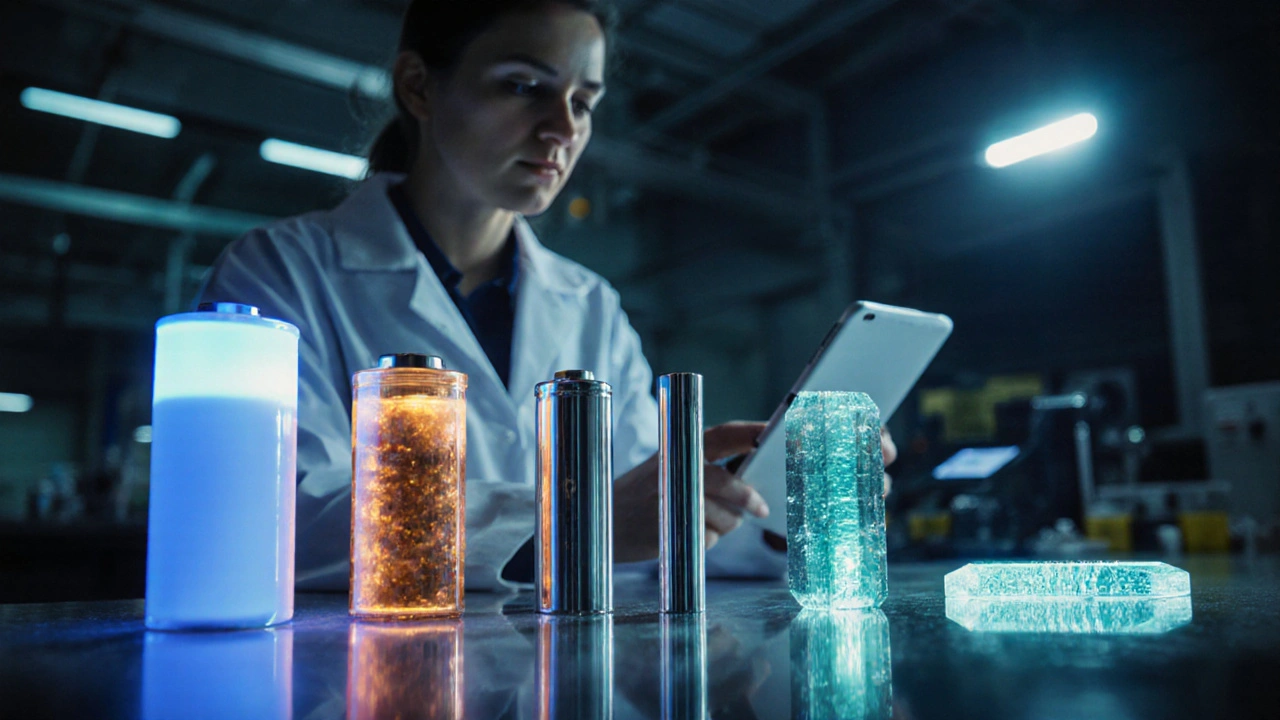Explore how lithium batteries stack up against sodium‑ion, magnesium‑ion, solid‑state and other alternatives, with performance data, use‑case tips and a handy comparison table.
Sodium Ion Battery: A Practical Guide to the Growing Energy Solution
When you start looking at Sodium ion battery, a rechargeable storage device that moves sodium ions between the anode and cathode to store and release electricity. Also known as Na‑ion battery, it offers a lower‑cost alternative to more common chemistries and fits neatly into today’s push for large‑scale energy storage, systems that balance supply and demand on the grid. Think of it as the workhorse you might see in home storage kits or utility‑scale farms, ready to charge when renewable power spikes and discharge when the sun or wind slows down.
Sodium ion battery technology hinges on its cathode material, typically layered oxides, polyanionic compounds, or Prussian‑blue analogues that host sodium ions during charge. These materials determine how much energy the cell can hold, how fast it can charge, and how long it will last. For example, a layered‑oxide cathode can push energy density up to 150 Wh kg⁻¹, while a Prussian‑blue version offers excellent rate capability and easier recycling. Choosing the right cathode is a balancing act between cost, safety, and performance.
The electrolyte is equally important. Modern electrolyte, the liquid or solid medium that transports sodium ions between electrodes blends sodium salts like NaPF₆ with organic carbonates or explores solid‑state polymers for extra safety. The electrolyte’s stability window sets the upper voltage limit, while its viscosity influences how quickly the battery can charge. A well‑tuned electrolyte can shave off 10‑15 % of internal resistance, meaning more power with less heat.
Performance of a sodium‑ion cell hinges on three numbers you’ll hear most often: energy density (how much juice per kilogram), power density (how fast it can deliver that juice), and cycle life (how many charge‑discharge rounds it survives). Thanks to advanced cathodes, modern cells can hit 150‑200 Wh kg⁻¹, while solid‑state electrolytes push power density above 1 kW kg⁻¹, enough to run small‑scale EVs for short trips. Cycle life has also improved; many prototypes now exceed 2,000 full cycles with less than 20 % capacity loss, making them competitive for stationary use.
Because energy storage, infrastructure that stores renewable electricity for later use can now rely on abundant raw materials, sodium‑ion batteries are reshaping the landscape. This shift reduces dependence on lithium mining and helps lower the overall cost of grid‑level storage. In practice, sodium‑ion systems are already being piloted in East‑Asian micro‑grids where cheap, reliable power is a priority.
When you compare sodium‑ion technology with the ubiquitous lithium ion battery, the original rechargeable workhorse that uses lithium ions, several points stand out. Sodium’s atomic weight makes the cell heavier, but the raw‑material cost can be a third of lithium’s price. Also, sodium‑ion chemistry tolerates a wider temperature range, which is useful for outdoor installations. These differences mean that sodium‑ion batteries often suit stationary storage, while lithium‑ion still leads in mobile applications.
What’s happening in the market? Companies are scaling up production lines, aiming for gigawatt‑hour capacities by 2027. At the same time, recycling schemes are emerging that focus on recovering sodium salts and cathode compounds, cutting waste and lowering the carbon footprint. Safety‑wise, sodium‑ion cells are less prone to thermal runaway because sodium’s lower reactivity compared with lithium, especially when paired with solid‑state electrolytes.
Beyond the grid, designers are testing sodium‑ion packs in electric buses, low‑speed scooters, and even in backup power for data centers. The chemistry’s tolerance to lower temperatures means a bus in a cold climate can start without a heating system for the battery. For portable electronics, the higher weight is still a drawback, but niche products like rugged field‑equipment benefit from the ruggedness and lower cost.
All of these factors—material affordability, electrolyte engineering, grid‑level impact, and safety improvements—create a compelling picture of where sodium ion technology is headed. Below you’ll find a curated selection of articles that dive deeper into each of these topics, from detailed cathode research to real‑world deployment case studies. Use them to sharpen your understanding and decide whether a sodium ion system fits your energy goals.

